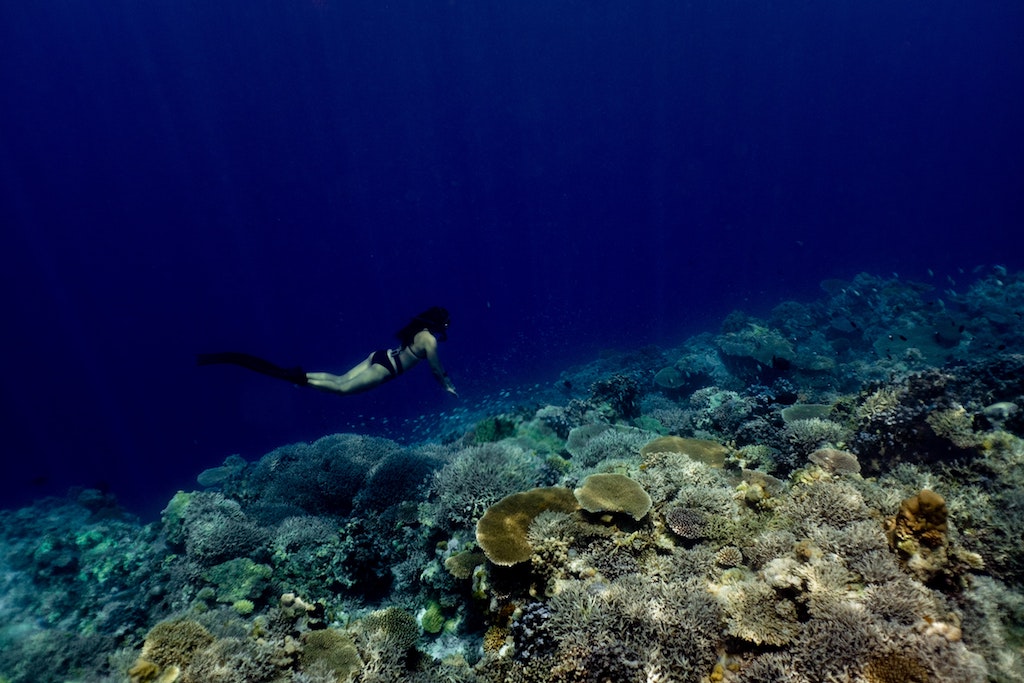If you’re looking to test your limits and truly connect with the ocean, you just might want to explore freediving.
Sure, you could stick to scuba, but there’s just something about pushing yourself to dive down sans equipment on a single breath that really allows you to dig deep, focus, and be nothing but present in the great big blue.
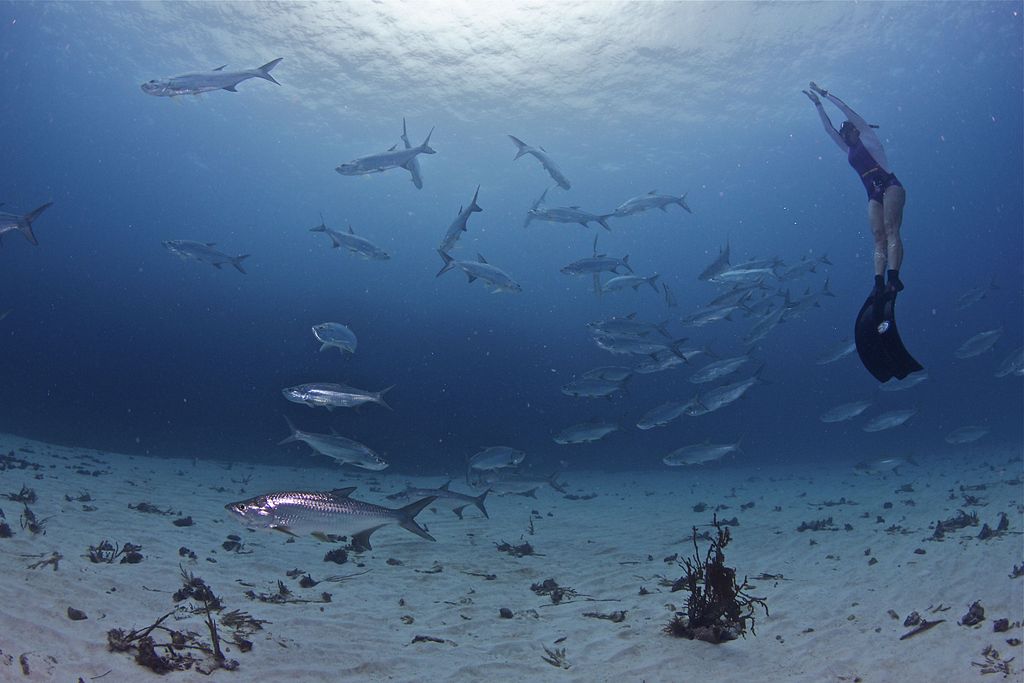
With relatively affordable rates, a range of legit schools, and a small variety of dive spots, Bali’s a great place to get started with freediving in Southeast Asia.
Whether you’re already keen to give it a shot or you’re looking to be convinced to give it a try, read on for a rundown of what it’s like to freedive in Bali, what to expect from a beginner’s course, and where you should take your introductory training.
Picking a school
Freediving is growing in popularity and that’s really reflected in the ever-expanding list of dedicated freediving schools and scuba centers offering courses in Bali.
There are four main spots that Bali’s freedive schools are concentrated in: Tulamben, Amed, Nusa Penida, and Pemuteran. One way to choose which school you want to enroll at is to narrow down your location, then go from there and look at the schools in that area.
We did our two-day beginner’s course with Apnea Bali in Tulamben on Bali’s more chilled out eastern coast, home to one of the island’s most famous dive spots, the USAT Liberty wreck. High ratings and positive reviews, the remote location, and the included fun dive at the Liberty wreck tipped the scale in favor of Apnea for us.
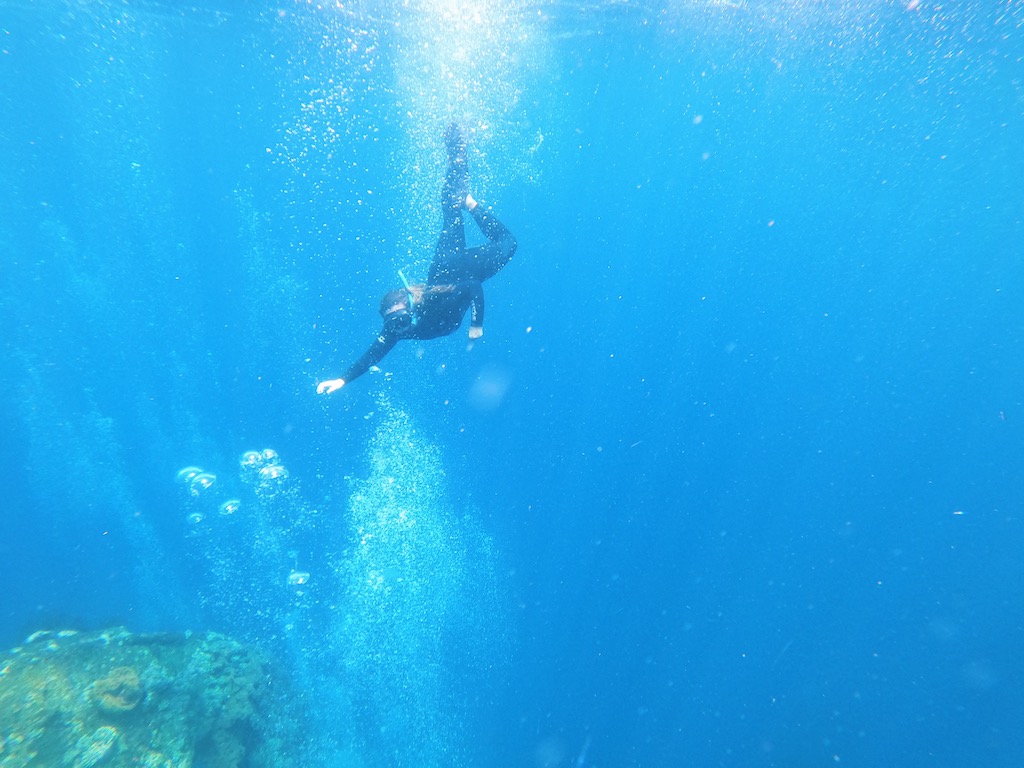
Also in Tulamben, we’ve heard nothing but good things about Apneista, which also does a two-day level 1 course and is located right on the beach.
Amed’s Jemeluk Bay is another spot worth checking out for those after a quiet, village vibe with yet a little more going on than Tulamben. Fathom Freedive, Fusion Freediving, and Ocean Prana are some well-rated schools in the area.
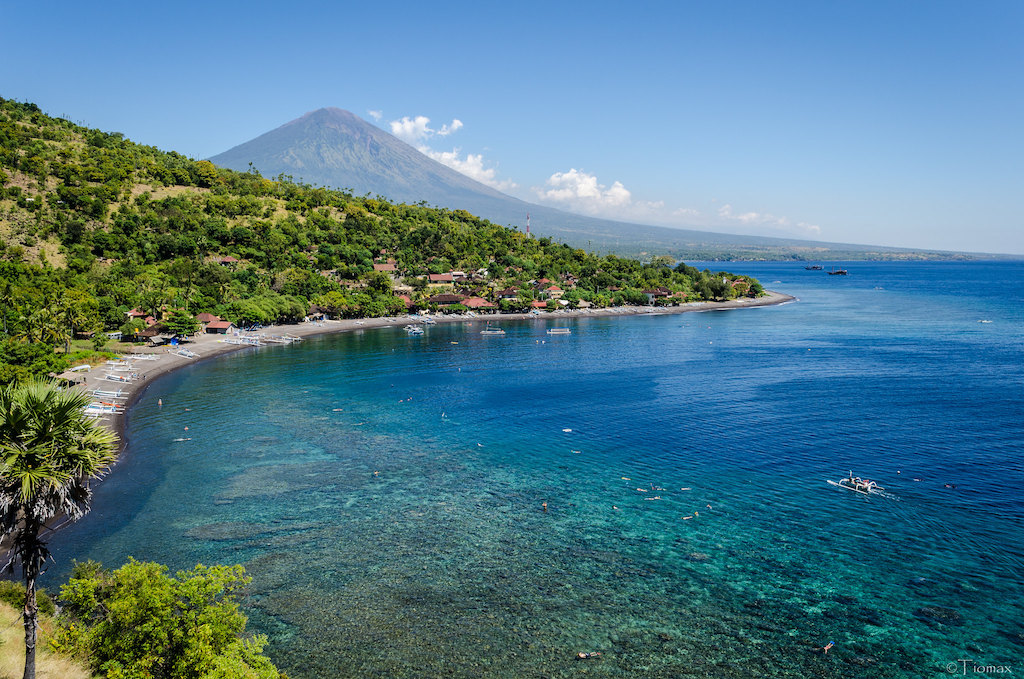
Have a look at Liquid Life if you’re over in buzzing Canggu. They offer classroom sessions at their school on Batu Bolong with a day trip to Jemeluk for their deep dive sessions. If you’ve got more time to spare and find you’re super into freediving, Liquid Life also has two-week and four-week freediving training in a 50-meter Olympic swimming pool that incorporates Molchanov Wave 1 Freediver and Lap 1 pool courses.
Up in West Bali National Park is the tranquil and beautiful (though sometimes rubbish-filled) Pemuteran. Bali Diving Academy and Ousia Freediving Academy both have beginner courses — Ousia even has a half-day introductory course for those who are curious and not yet ready invest time and money.
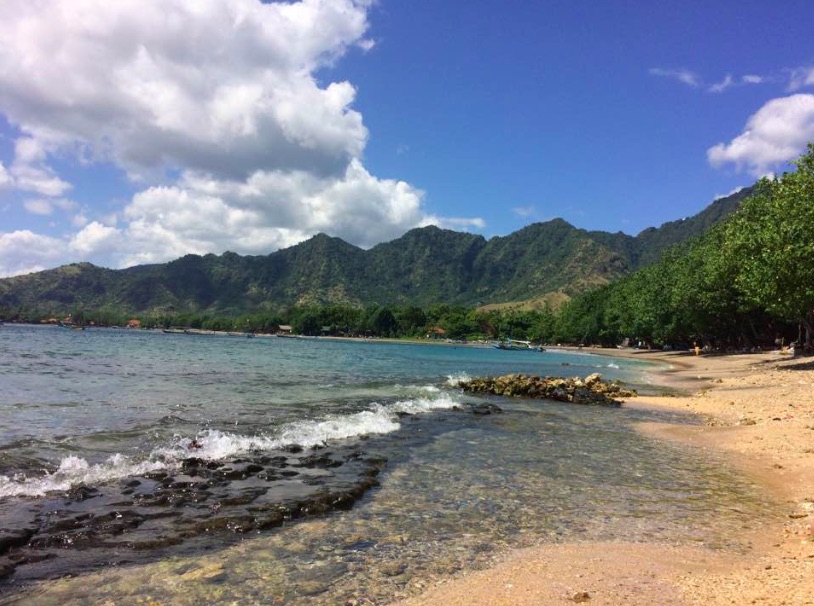
While Nusa Penida and Nusa Lembongan are other spots you can learn at, keep in mind that the little islands are not the most beginner-friendly around Bali with strong currents and more intense conditions in general. However, if you’re sold on Penida, Freedive Nusa does have a two-day SSI Level 1 course. Meanwhile, Blue Corner Dive (in Penida, Lembongan, and Mejangan) has a one-day, pool-only intro course, and a two-to-three-day PADI course.
If you’re already in South Bali and can’t get up north or prefer to stay in a busier part of the island, Fusion Freediving (based in Amed) additionally does do some training in Sanur.
Okay, so we’ve told you where to look for schools, but what should you look for when nailing down your course? Obviously read through the reviews to see what former students have to say, but also look at how much water time the course offers, pool vs. ocean time, if a certificate is included, small class sizes, and — this one for us was a biggie — a no pressure attitude. By this last one, we mean an approach that is more focused on teaching you the proper techniques of freediving and getting you comfortable going deep, rather than pushing results and merely targeting a specific depth.
A note about certifications: There are a number of different certification programs in the world of freediving. Molchanovs, AIDA, SSI, Apnea, and PADI, oh my! While different certifications all have their own benefits and drawbacks, in many cases, different freediving schools will let you switch around if you have a different certification than what they offer. Also, keep in mind that sometimes two days isn’t enough to get certified. If you’re a slow learner — like we were — you might not walk away with a certificate after your course, even if it’s offered. If that’s the case, you can always just go on line dives with a dive school or private instructor after your course and once you’ve got the skills, test for the certification and move on to the next level!
Price range: Most two-day beginner courses in Bali run for US$180 to US$230.
What the course is like
The vast majority of beginner freediver courses in Bali span for two days and are broken down between classroom time and water time. Expect to spend a ton of time in the classroom as you’re just getting started and have a lot to learn.
At Apnea, they structure both days to include mornings in the classroom for about three hours and then afternoons doing line-training dive sessions — this is when you swim out from the shore and practice going down a rope anchored from a buoy, meter by meter. After the line-training on the second day, a fun dive to the USAT wreck was included — meaning, no line and the dive was spent exploring the wreck.
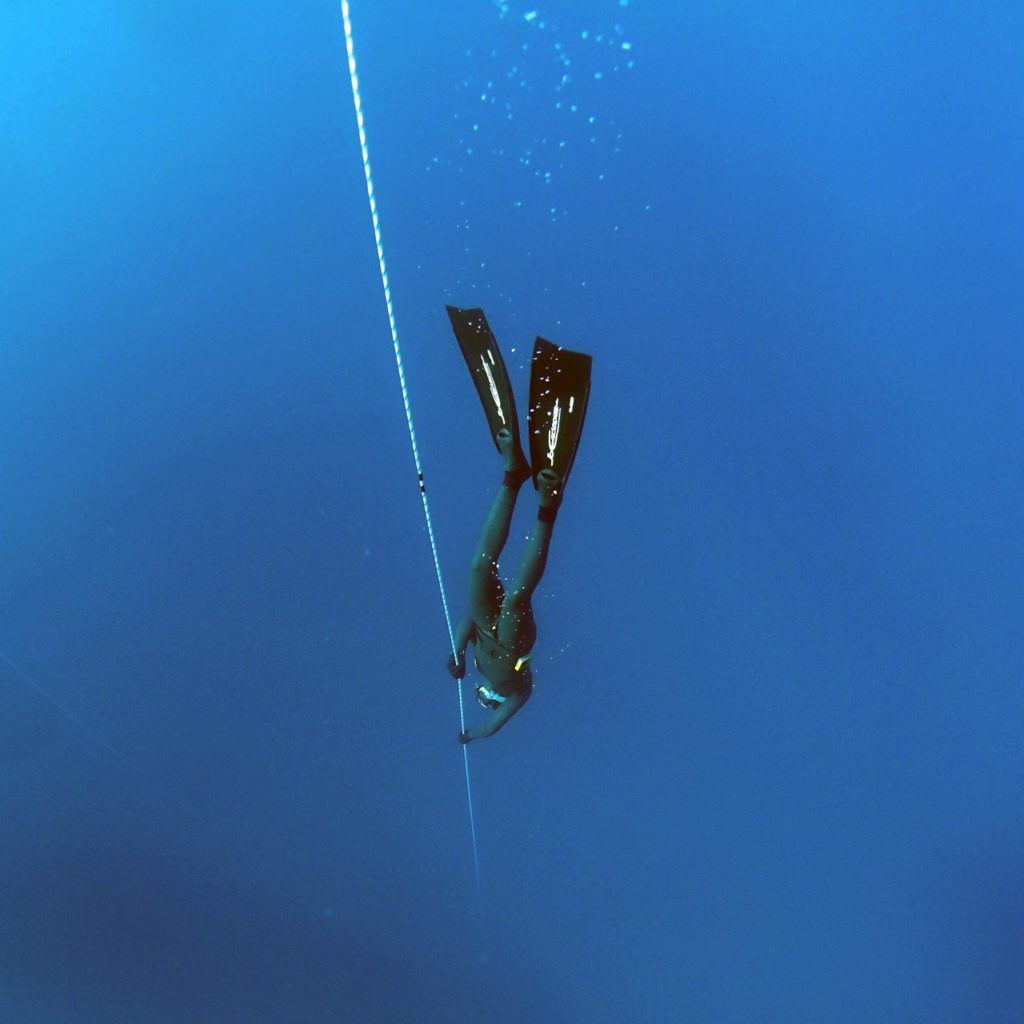
In the classroom, we got an overview of the sport and spent much of the first day working on equalizing.
On the second day, we continued with pranayamic breathing techniques (yes, the ones you’ve done in your yoga class) and went over rescue scenarios and duck diving.
As for the dives, different schools do it different ways, but at Apnea, you go down a maximum depth of 12 meters on your first day and a maximum depth of 20 meters on your second day.
We’ll be honest with you: we were nowhere near these depths. We had a hard time equalizing and didn’t even get the technique down properly until our second day and were hit hard by seasickness on day 1 — you really do feel every little ripple when bouncing on the buoy and waiting between turns going down — and sinus issues on day 2.
During the water sessions, you take turns with the other people in your course pulling down the line and seeing how deep you can go. For us, we found it harder to equalize than to hold our breath — but everyone is different.
FYI: Food and accommodation are typically not included in freediving courses in Bali, unless you’re doing a retreat.
Freediving training for surf survival
If you want to train your breath-hold technique to use out in the surf, some freediving schools in Bali actually have surf-survival courses. Apnea, Liquid Life in Canggu, Fathom in Amed, and Freedive Nusa in Penida all have listings for surf survival courses of varying intensity.
Freediving for spearfishing
Getting into freediving because you want to go Kimi-Werner style and try spearfishing? Fathom and Fusion have spearfishing-specific courses.
Our quick tips for heading into your first freediving class:
-Get plenty of rest and unwind before your course — don’t arrive in town on the day of or even the night before if you can help it
-Give yourself time to get the hang of the techniques. It’s a lot of information to digest
-Bring motion sickness medication if you’re prone to seasickness
-Try gua sha for sinus issues
-Bring zinc sunscreen for your face — you’re in a prime sunburn position with all that time at the buoy
-Come with an open mind
MORE FROM COCO TRAVEL
Insta vs. Reality: What it’s *actually* like to stay in a treehouse in Bali
